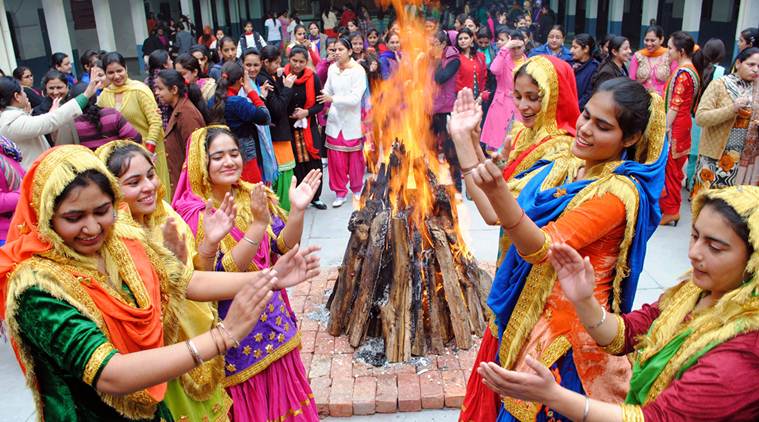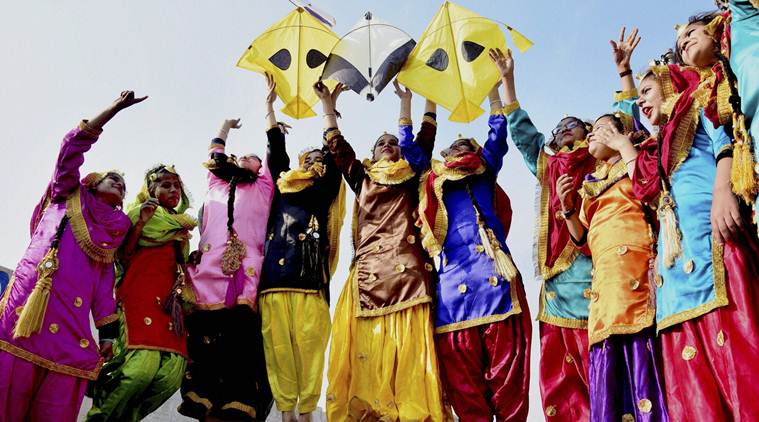📣 For more lifestyle news, click here to join our WhatsApp Channel and also follow us on Instagram
Lohri 2017: Date, Customs, Traditions, Significance, History and Legends
All you want to know about the popular Punjabi festival - the bonfire and other rituals of this harvest festival and why it is celebrated.
 In Punjab and Haryana, the harvest festival is known as Lohri. It is one of the most celebrated festivals in the region. (Source: Express photo by Rana Simranjit Singh)
In Punjab and Haryana, the harvest festival is known as Lohri. It is one of the most celebrated festivals in the region. (Source: Express photo by Rana Simranjit Singh)
In India, there is no one time of the year that can be regarded as the ‘only’ festive season. As the world is just getting into work mode post the New Year celebrations, we are all set to celebrate series of festivals around the country, beginning with the harvest festival. Celebrated with different names such as Lohri, Pongal, Bihu among others, each region acknowledge the gifts of nature and say thanks for a bountiful harvest.
In Punjab and Haryana, the harvest festival is known as Lohri. It is one of the most celebrated festivals in the region. The festivity is a way to solemnise harvesting of the Rabi (winter) crops and enjoying the traditional folk songs and dances and amazing food.
WATCH VIDEO | Happy Lohri! Watch People Dancing To Traditional Drum-Beats
Significance
Celebrated on January 13 every year, it commemorates the passing of the winter solstice. According to popular belief, Lohri represents the longest night before the winter solstice as it was originally celebrated on the night before winter solstice followed by the shortest day of the year which is observed in Magh, in the Hindu lunar calendar. Though Punjab is known for its wheat productions, this festival is related to sugarcane cultivation in the region. The traditional time to harvest sugarcane crops is January, thus Lohri is seen by some to be a harvest festival. Punjabi farmers also see the day after Lohri (Maghi) as the financial New Year.
 Jaggery or gur is essential to the festival along with til or seseame seeds. Gajak and chikki are most popular dishes of the festival. (Source: Thinkstock images)
Jaggery or gur is essential to the festival along with til or seseame seeds. Gajak and chikki are most popular dishes of the festival. (Source: Thinkstock images)
Food
Sugarcane products such as gur (jaggery)and gachak are essential to Lohri, so are the nuts that are harvested during this time of the year. The other important food item of Lohri is radish which can be harvested between October and January. Eating mustard leaves and spinach on Lohri is an important ancient tradition followed by all. Mustard is cultivated mainly in the cold winter months because the crop is suitable for such climatic conditions. Traditionally people eat gajak, sarson da saag, makki di roti, radish, ground nuts and jaggery on this day. Part of the festival food also includes ritual to eat “til rice” which is made by mixing sesame seeds, rice and gur.
ALSO READ | Happy Lohri 2017: 5 lip-smacking Lohri recipes to make your celebration special
Rituals
Lohri is a means to commemorate fertility and the joy of life. Harvested fields and farmyards lit up with lights and bonfires are the central part of the celebrations. Right through the bitter winter day, people go around collecting dry twigs and branches to make a bonfire. The bigger the bonfire the better is Lohri celebration.
 Folk dances are part of the festival. While men perform Bhangra, women dance Gidda. (Source: Express Photo by Amit Mehra)
Folk dances are part of the festival. While men perform Bhangra, women dance Gidda. (Source: Express Photo by Amit Mehra)
In the morning, children go from door to door singing and demanding the Lohri ‘loot’ in the form of money and eatables like til (sesame) seeds, peanuts, jaggery, or sweets like gajak, rewri.
In the evening, people circle around (parikrama) the bonfire and throw puffed rice, popcorn and other munchies into the fire, shouting “Aadar aye dilather jaye” (May honor come and poverty vanish!), and sing popular folk songs. This is a prayer to Agni, the fire god asking for his blessing for prosperity and fertility of the land. The fire signifies the spark of life and prayers are said for goodwill and abundant crops.
On this day people wear new clothes and gifts and sweets are exchanged. The courtyard and rooms of the house are swept and sprinkled with water. Often newlyweds wear jewellery and the newborns are given little combs to hold as part of rituals.
People throw sugarcane sticks into the fire as an offering, and an aroma of burning sugar spreads in the atmosphere. Women also light fireworks. People sing and dance Bhangra till the early hours of the morning. Traditionally, women do not join in Bhangra, they hold a separate bonfire in their courtyard doing the graceful Gidda dance.
 School girls wearing traditional Punjabi dresses perform at Lohri Festival in Amritsar. (source: PTI)
School girls wearing traditional Punjabi dresses perform at Lohri Festival in Amritsar. (source: PTI)
ALSO READ | Lohri 2017: Best Lohri SMS, Whatsapp, and Facebook Messages to wish your loved ones
Legends
Among the most popular tales in Punjab, the legend of Dullah Bhatti is most prominently associated with Lohri. Lohri is also associated with weddings, many famous Lohri songs are based on the old love story of Dulla Bhatti– the tale of a man who rescued a girl from her cruel abductors and adopted her and went onto arranging her marriage as if she were his own daughter. The gallant songs urge the youth to protect the honour of their sisters and daughters and punish those who try to dishonour them.
Honouring and praying to Sun god is also an essential part of the festivity. Young, unmarried girls assemble and visit households in the neighbourhood to ask cow-dung needed for the bonfire and chant prayers for the Sun god. The mantra is to invoke the Sun God to send them enough heat that the winter cold would not harm them. And, in acknowledgement they chant this mantra orbiting the fire. Lohri fire is the homage to the sun. There is a legend amongst some that Lohri comes from the word ‘loh’, which means the light and the warmness of fire.
Puja date and time
Lohri is celebrated in the month of Paush and it’s observed on the last day of this Hindu month, that is on January 13, in the Gregorian calendar. It is, actually, celebrated a day before Maghi, as it marks the end of the winter season. As the sun sets, the bonfire is lit and anytime after the sunset is suitable for the auspicious rituals.
📣 For more lifestyle news, click here to join our WhatsApp Channel and also follow us on Instagram



- 01
- 02
- 03
- 04
- 05
























